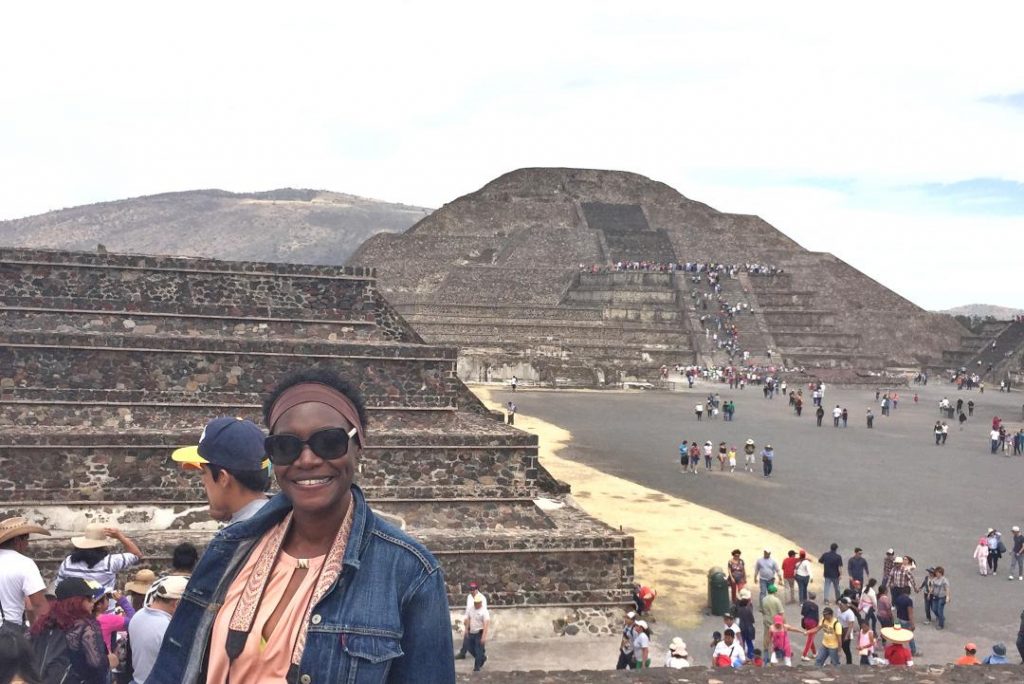Mexico City is absolutely captivating! High-altitude and high-octane, this bustling metropolis reigns supreme as the largest and most populous in the Western Hemisphere. Mexico City’s culinary scene is nothing short of extraordinary, boasting flavors that tantalize the taste buds. The cityscape is adorned with architectural wonders that narrate tales of history and culture, while its art galleries and museums offer a glimpse into the artistic soul of Mexico.
However, amidst the exhilarating chaos of Mexico City’s 8.5 million inhabitants, one cannot overlook the potential for overwhelm within its bustling, populous confines. Consider taking a brief hiatus from the whirlwind of CDMX and allow for the exploration of nearby towns and sites, each offering its own unique charm and allure. From ancient ruins to quaint colonial villages, there are many options for an unforgettable day trip. Here are some of the best day trips that await just beyond the vibrant streets of Mexico City.
This page contains affiliate links. If you click on one and/or make a purchase, I get a small percentage of the sale.
1. Teotihuacan
25 miles (40 km) from Mexico City lies the ruins and pyramids of the ancient Mesoamerican city, Teotihuacan. This UNESCO World Heritage Site is the most visited archaeological site in Mexico. The Teotihuacan complex was one of the largest pre-Columbian cities in the Americas, flourishing from around 100 BCE to 650 CE. At its peak, it may have had a population of over 100,000 people.
Teotihuacan, which translates to “birthplace of the gods”, is anthropologically significant not only because of the pyramids but also because of its complex, multi-family residential compounds, well-preserved murals, and the Avenue of the Dead, the massive boulevard which links the pyramids and the temple.


The complex is known for its impressive pyramids, with the Pyramid of the Sun and the Pyramid of the Moon being the most prominent structures. There is also the Temple of Quetzalcoatl, also known as the Feathered Serpent Pyramid, another notable feature of the site.
Believed to have been built around 200 C.E. by the region’s Indigenous people, the Pyramid of the Sun stands 216 feet (65.5 meters) tall and is the largest pyramid in Teotihuacan, and the 3rd largest in the world.
The Pyramid of the Moon is smaller in size compared to the Pyramid of the Sun but is still an impressive structure. It stands about 140 feet (42 meters) tall. The purpose of the pyramids remains uncertain, but it likely had religious significance, possibly serving as a ceremonial center.

The Temple of Quetzalcoatl, also known as the Feathered Serpent Pyramid due to the presence of intricate carvings depicting the feathered serpent deity, Quetzalcoatl is characterized by its elaborate sculptural decorations.
Visitors can climb the approximately 250 steps of either the Pyramid of the Sun or the Pyramid of the Moon for panoramic views of the complex and nearby mountains. Quetzalcoatl, which only has about 50 steps to the top, is also open for visitors to climb.
The complex also houses the Museum of Teotihuacan Culture, which includes artifacts discovered during excavations.
Tickets for the Teotihuacan day trip from Mexico City including options for fast track, fast track access, and transport from Mexico City, Teotihuacan, and Shrine of Guadalupe, Teotihuacan pyramids, and hot air balloon ride with an English-speaking guide can be purchased via Tiqets.
Getting There From Mexico City
By Bus: You can take a bus from Mexico City’s North Bus Terminal (Terminal Central de Autobuses del Norte) to the town of San Juan Teotihuacan, which is located near the archaeological site. Buses depart frequently and the trip takes about an hour. Once you arrive in San Juan Teotihuacan, you can take a taxi or walk to the archaeological site.
By Tour: Many tour companies in Mexico City offer guided tours to Teotihuacan. These tours often include transportation from your hotel in Mexico City to the archaeological site, guided tours of the site itself, and sometimes visits to nearby attractions such as the Basilica of Our Lady of Guadalupe. This is a convenient option if you prefer a guide and don’t want to worry about transportation logistics.
By Car: If you prefer more flexibility in your schedule, you can also rent a car and drive to Teotihuacan from Mexico City. The drive takes approximately one hour depending on traffic. Take note that parking at the site can be limited, especially during peak hours.
Whichever option you choose, make sure to check the opening hours of the archaeological site and plan your visit accordingly.
Please PIN AND SAVE for future travel planning
2. Taxco
Located approximately 100 miles southwest of Mexico City, situated on a steep hillside is the picturesque city of Taxco. With its narrow, winding cobbled streets and opulent architecture Taxco is considered one of the best-preserved colonial cities in Mexico earning its rightful place as a National Historic Monument.
Renowned globally as the “World Silver Capital,” Taxco produces a staggering 65% of Mexico’s silver. There are 6 working mines in the vicinity and an estimated 300 skilled silversmiths showcasing their craftsmanship in myriad shops scattered throughout the town.

The 18th-century church, Parroquia de Santa Prisca y San Sebastían, sits in the main square, Plaza Borda, which is named for the Spaniard José de la Borda who made a fortune from the Taxco silver mines he owned. Commonly referred to as Santa Prisca, the famous rose-colored Baroque church was built between 1751 and 1758 and its stone twin towers are an excellent example of Churrigueresque, the highly ornate baroque architecture popular in Latin American countries. Inside Santa Prisca are several carved images of saints and angels covered in gold leaf, and paintings by Vera Cruz master, Miguel Cabrera.
The majestic Parroquia de Santa Prisca y San Sebastían sits in the main square, Plaza Borda. Named in honor of the illustrious Spaniard José de la Borda, whose immense wealth stemmed from the silver mines he owned in Taxco, sits in the main square, Plaza Borda. Named in honor of the illustrious Spaniard José de la Borda, whose immense wealth stemmed from the silver mines he owned in Taxco, this 18th-century marvel stands as a testament to the city’s opulent past. Commonly referred to as “Santa Prisca,” the magnificent rose-hued Baroque church was built between 1751 and 1758 and its stone twin towers are an excellent example of Churrigueresque, the highly ornate baroque architecture popular in Latin American countries. Step inside Santa Prisca, and be greeted by a symphony of gold-leaf-covered saints and angels, alongside masterful paintings crafted by the esteemed Vera Cruz artist, Miguel Cabrera.

Taxco is also famous for its Semana Santa (Holy Week) celebrations. Many events take place around the city, but none are as renowned as the Passion Play.


Held annually on Good Friday, this poignant portrayal of the crucifixion of Christ captivates locals and visitors alike, beckoning all to partake in the spiritual fervor that permeates Taxco’s atmospheric streets during the Easter holidays.
Getting There From Mexico City
By Bus: Terminal de Autobuses de Pasajeros de Oriente (TAPO): This is one of the major bus terminals in Mexico City. Several bus companies offer services to Taxco from here. You can check schedules and book tickets online or at the terminal.
Terminal de Autobuses del Sur (TAS): Another major bus terminal in Mexico City, located in the southern part of the city. Like TAPO, several bus companies operate routes to Taxco from here.
By Car: If you prefer to drive yourself, you can rent a car in Mexico City and drive to Taxco. The journey takes around 2-3 hours depending on traffic and road conditions. The route is relatively straightforward, with well-maintained highways leading to Taxco.
By Tour Operator: Several tour companies in Mexico City offer day trips or multi-day tours to Taxco. These tours typically include transportation, a guide, and sometimes additional activities or stops along the way.
Please PIN AND SAVE for future travel planning
3. Toluca
Situated approximately 30 miles (50 km) southwest of the bustling Mexico City, Toluca emerges as a hidden gem waiting to be discovered by avid enthusiasts of art and culture. Second only to the capital in the abundance of museums, Toluca beckons travelers with its rich historical tapestry and vibrant cultural landscape. For those seeking a deeper immersion into Mexico’s artistic heritage, this city presents an enticing array of options. Among its many delights are Museo de la Acuarela, Centro Cultural Mexiquense, and Museo Torres Bicentenario. – three institutions that showcase the diverse and dynamic world of Mexican art.
Museo de la Acuarela celebrates the delicate art form of watercolor. From breathtaking landscapes to intricate portraits, each piece on display tells a story of the artist’s mastery and creativity. Centro Cultural Mexiquense offers everything from contemporary installations to traditional performances, there’s something for everyone to enjoy at this vibrant cultural hub. Museo Torres Bicentenario, housed within a stunning architectural marvel, offers a journey through the centuries, from pre-Columbian civilizations to the struggles for independence, showcasing artifacts, documents, and artworks that chronicle Mexico’s past.

While in Toluca, take note of the city’s numerous architectural gems such as Los Portales, a monumental set of 19th-century arches located in the historic center. Los Portales houses a charming blend of restaurants and shops brimming with authentic Mexican candies and souvenirs that capture the essence of the vibrant culture.
Other architectural treasures not to miss include the Catedral de Toluca, which showcases the elegance of Neo-Classical design, and the enchanting Cosmovitral Botanical Garden, where vibrant flora and fauna meet artistic mastery in the form of mesmerizing stained glass.

And let’s not forget Toluca’s savory claim to fame as the chorizo-producing capital of Mexico. Visitors are encouraged to try some of the delicious cured meat and savor the flavors that have made Toluca a culinary destination like no other.
Getting There From Mexico City
By Bus:- Go to the Observatorio Bus Terminal in Mexico City, which is the main hub for buses heading to Toluca. Several bus companies operate this route, including Primera Plus, ETN, and Pullman de Morelos. Buses depart frequently throughout the day, so you can check the schedules either online or at the terminal.
By Train: – The Toluca–Mexico City commuter rail connects the two cities. The line runs from Mexico City’s Buenavista Station to Toluca’s Terminal Toluca, also known as Zinacantepec Station. Trains run approximately every 30 minutes during peak hours. You can check schedules online or at the station.
By Tour Operator: Day Tours: There are several tour companies in Mexico City offering day trips to Toluca and its surrounding areas. These tours typically include transportation from Mexico City to Toluca, guided tours of Toluca’s attractions such as the Cosmovitral Botanical Garden or the historic center, and sometimes lunch.
By Custom/Private Tours: If you prefer a more personalized experience, you can also hire private tour companies or guides to take you from Mexico City to Toluca. These tours can be tailored to your interests and schedule, allowing you to explore Toluca at your own pace.
Please PIN AND SAVE for future travel planning.



